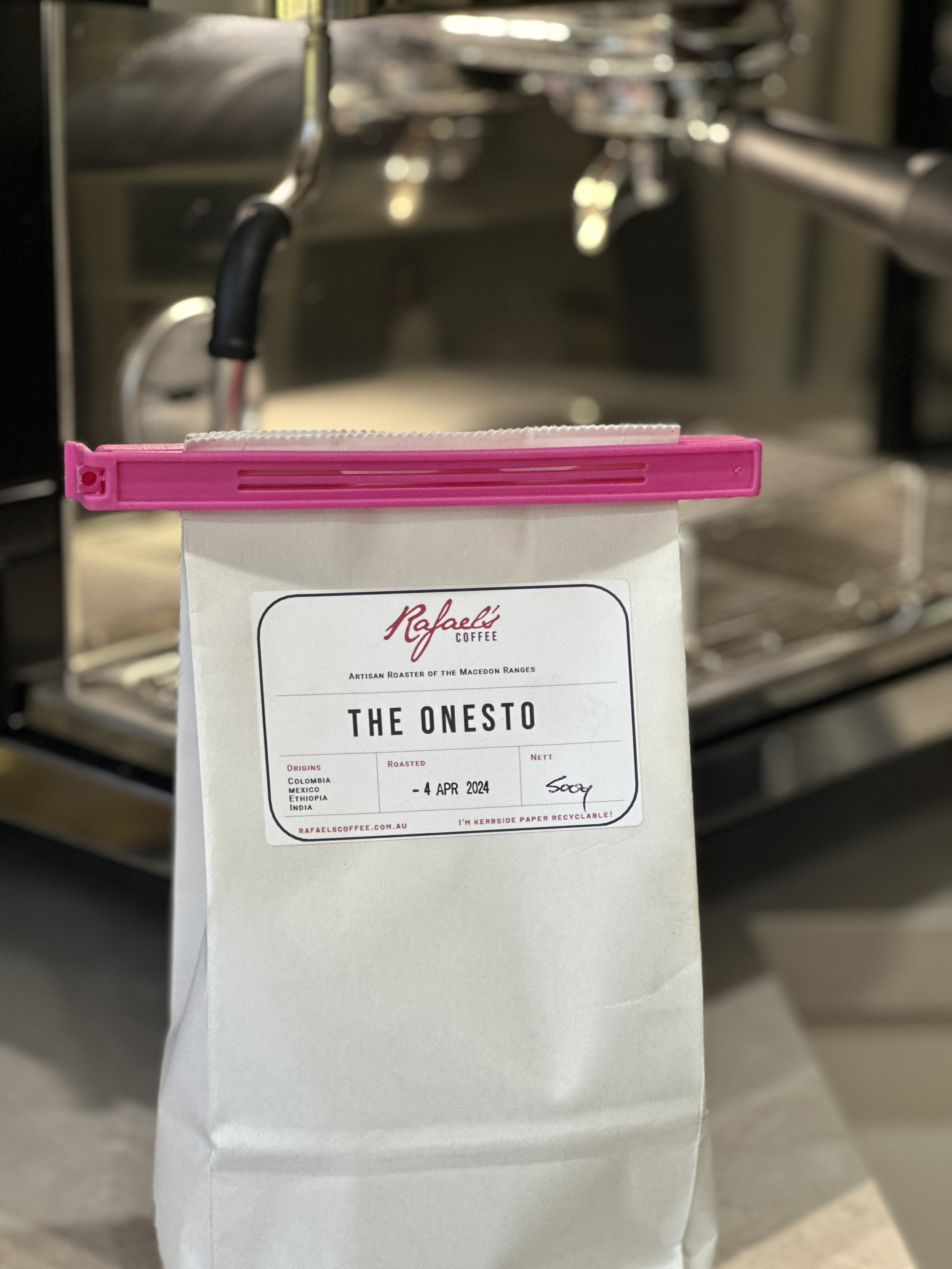Graph date - 1 April 2025
Source - https://au.investing.com/commodities/us-coffee-c-streaming-chart
The graph is the ‘C’ price of coffee at the Intercontinental Exchange (ICE) in New York.
It’s important to note that the C price is solely the price of the green beans at origin (ie. where they’re grown) and that’s a long way from its’ journey to the roaster and ultimately the consumer!
Here’s why global coffee prices have reached record highs:
Adverse Weather Events: Droughts in Brazil (largest Arabica producer in the world) and floods in Vietnam (largest Robusta producer in the world), has resulted in reduced yields causing a supply shortage. Demand is currently outstripping supply.
Increased demand: Increased coffee consumption in China and India is creating a supply deficit.
Rising Production Costs: Increased transportation and labor expenses have added to the overall cost of coffee production.
Increased shipping and freight charges: as a consequence of Houthis rebels repeatedly attacking ships transiting the Red Sea, ships are now diverting via longer routes creating increased shipping charges.
Geopolitical Tensions: Political instability in some regions has also contributed to market volatility.
Supply Chain Disruptions: The volatility in the market has created uncertainty and challenges for coffee traders and roasters.
Weak Australian dollar: a weak dollar increases the price of imports.
What’s the Price of Coffee Doing?
Roast Levels
Fundamentally, coffee beans can be roasted to a light, mid or dark level. Is the difference important,’Yes’depending on how you like your coffee!
Flavour profiles of the same bean will vary considerably depending on roast level:
· Light roast will have light body, high acid, high sugar. Flavour will be fruitier and more floral. Bean surface will be light with low lustre.
· Mid roast will have medium acid, medium sugar and good body. Flavours will be balanced and overall smooth. Bean surface will be light brown with low lustre.
· Dark roast will have intense body, low acid and low sugar and low bean varietal characteristics. Flavours can be charry with high bitterness. Beans will be dark brown, even close to black and glossy.
At Rafael’s Coffee we roast to a mid-level with the Llaneros and Calabrian blends being at the slightly darker spectrum of mid-level for the espresso and non-milk coffee drinkers. Our aim is to create a smooth and well balanced coffee in the cup!
Storing Coffee beans
Coffee beans, like any other fresh product, are quickly degraded from exposure to air, heat, light and moisture.
There are varying schools of thought on how to best store your coffee but we recommend keeping them in the bag in which they come in, or a specifically designed container that can be purged of air. Best place to store beans for daily use is in the pantry.
The key thing is to purge the air from the bag or container and reseal and don’t buy more than 3-4 weeks of beans in the interests of freshness. Our kerbside recyclable paper bags can be purged and resealed with a food clip.
We don’t recommend storing beans in the fridge because it doesn't extend freshness and there's the chance of aroma contamination from other items in the fridge. If you need to store surplus coffee for a while, the freezer is an option but make sure you remove them well in advance of intended use to prevent condensation and clumping in your grinder.
Grinding coffee
The get the best possible coffee drinking experience, you should grind your freshly roasted coffee beans as you go.
While pre-ground coffee may be convenient, because the beans have been broken up into tiny pieces, it degrades very quickly due to oxidation and therefore loses much of its aromas and flavour attributes very quickly ie. within hours!
The other challenge is that if you’re using an espresso machine, to make a great coffee your grind needs to be tweaked every day to take into account the aging of the beans and ambient conditions such as humidity and temperature – pre-ground coffee deprives you of doing that.
Remember that if you buy ground beans, the grind size needs to match your brewing equipment – fine for espresso to coarse for plunger and everything in between.
If you decide to venture down the path of buying a grinder, this purchase is as important as your coffee machine so make sure it's a burr grinder, not a blade grinder, especially if you use a pressurised brewing system.
dosing, distribution & tamping
To get a great coffee shot, dosing, distribution and tamping of your grind (aka 'puck') in the group handle basket is critical:
· Dose to the correct amount of your basket capacity by weighing the coffee dose on precision scales – don't overfill or underfill the basket. Typically, a basket is at capacity when the tamped puck sits approximately 8mm below the top of the basket rim.
· Distribute the grinds in the basket using a distributor or gentle tapping with the handle of your tamper to prevent channelling – this is when water under pressure tracks through the path of least resistance which results in an under-extracted coffee shot.
· Tamp with a firm and vertical downward pressure and finish off with a twist to create a nice smooth finish on the puck.
· Once you’ve tamped, don’t subject the group handle to any further taps or knocks or you will break the seal from the edge of the puck and the basket which will cause channelling
Getting these steps right means you’ll get a nice even extraction from your shot which results in optimum flavour.
Coffee shots
What’s the ideal time for pulling an espresso shot to get a nicely balanced and delicious coffee experience?
As a general principle, 25 and 35 seconds is ideal, although there are exceptions such as a ristretto - a shot pulled short to capture the heart of the coffee shot.
Factors that determine the resultant shot are grind, dose, distribution and tamping.
The coarser the ground coffee, the faster the extraction. Conversely, the finer the ground, the slower the extraction.
If your grind is too coarse you’ll get a short shot (<25 seconds) which will lack flavour and be insipid. If your grind is too fine (>35 seconds) you’ll get more bitterness. When you over extract you will see beige marks in the crema, they contain bitterness.
To get the perfect shot every time, you need to approach your coffee making techniques consistently.





